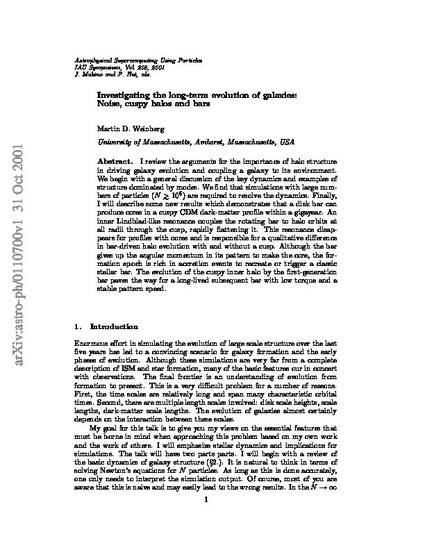
I review the arguments for the importance of halo structure in driving galaxy evolution and coupling a galaxy to its environment. We begin with a general discussion of the key dynamics and examples of structure dominated by modes. We find that simulations with large numbers of particles (N ≥ 106) are required to resolve the dynamics. Finally, I will describe some new results which demonstrates that a disk bar can produce cores in a cuspy CDM dark-matter profile within a gigayear. An inner Lindblad-like resonance couples the rotating bar to halo orbits at all radii through the cusp, rapidly flattening it. This resonance disappears for profiles with cores and is responsible for a qualitative difference in bar-driven halo evolution with and without a cusp. Although the bar gives up the angular momentum in its pattern to make the core, the formation epoch is rich in accretion events to recreate or trigger a classic stellar bar. The evolution of the cuspy inner halo by the first-generation bar paves the way for a long-lived subsequent bar with low torque and a stable pattern speed.
Available at: http://works.bepress.com/martin_weinberg/13/
